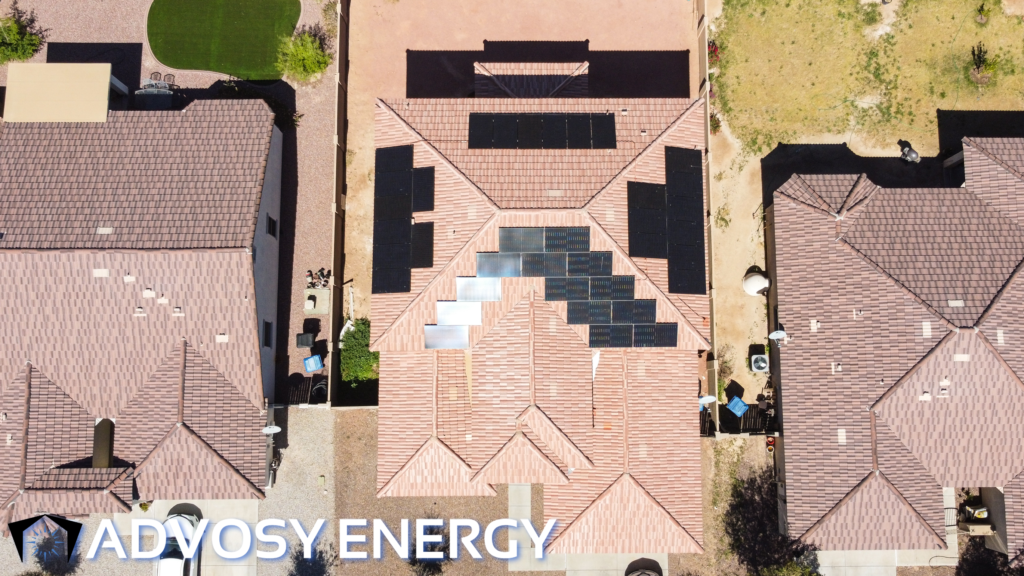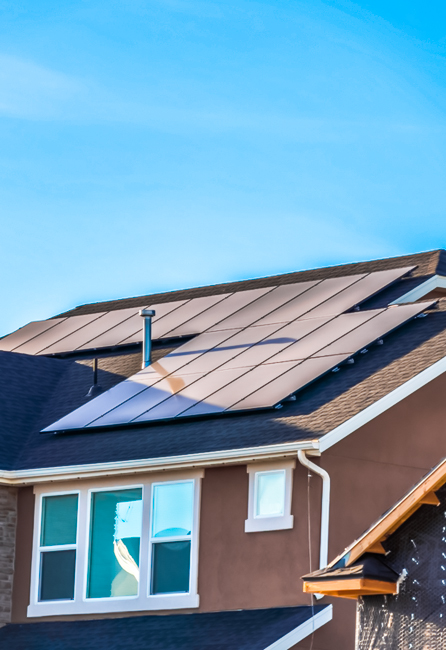Solar roofing systems are becoming increasingly popular for their potential to save on energy costs and reduce carbon footprints. For homeowners, it is important that these systems be properly maintained in order to ensure they continue working efficiently and safely.
This article will provide an overview of how to detect and repair common solar roof system faults. The article will cover various topics related to detecting and repairing issues with solar roofs. These include evaluating the condition of components such as photovoltaic cells, checking electrical wiring connections, inspecting seals around flashing units, diagnosing problems with controllers, correcting module misalignments, restoring damaged or corroded connectors, replacing faulty parts, and more.
The article aims to empower readers by providing them with the knowledge needed to successfully detect and repair any fault present in a solar roofing system.
1. Evaluating The Condition Of Solar Cells
Solar cells are a key component of any solar roofing system. It is important to regularly evaluate the condition and performance of these units in order to ensure efficient operation and longevity of the entire system.
Testing materials, such as current meters, thermometers, and multimeters can be used to measure electrical output or resistance values for each cell. The surfaces should also be visually inspected for damage or degradation due to age, weather exposure or other factors that could affect performance.
Cleaning methods can help maintain optimal conditions by removing dirt particles from the surface which might interfere with light absorption levels. Additionally, an infrared camera can detect differences in temperature across the modules which may indicate issues related to wiring connections or inadequate insulation.
2. Checking Electrical Wiring Connections

In order to ensure the safety and integrity of a solar roofing system, electrical wiring connections must be properly checked.
Testing voltage is essential in this process as it can reveal any potential shorts or overloads that may exist within the connection.
By assessing insulation resistance in all components, a technician can identify areas where current leakage may occur due to faulty insulation.
This helps prevent potential damage to connected systems and reduces the risk of fire hazards associated with poor electrical connections.
Additionally, by inspecting wires for deterioration or fraying, technicians can take proactive measures against wire breaks which could lead to system failure or power outages.
In summary, regular checks of electrical wiring connections are critical for maintaining proper functionality of solar roofs.
3. Inspecting Seals Around Flashing Units
After checking the electrical wiring connections, it is essential to inspect seals around flashing units.
Identifying leaks in and around solar panels can be a difficult process without proper inspection. The most common areas for leakage are at the seams between dissimilar materials such as glass, metal or plastic. Therefore, it is important to check all flashings during an inspection for any signs of water penetration.
A thorough inspection will include looking for damaged caulking or sealant that could allow moisture to seep through gaps or cracks. Additionally, inspecting each unit’s individual sealing points requires knowledge of how they were installed so that issues may be addressed properly.
This type of work should only be undertaken by experienced professionals who understand the importance of maintaining optimal insulation and preventing corrosion due to water infiltration. Properly maintained seals help ensure your solar roofing system runs efficiently and safely while avoiding costly repairs down the line.
4. Diagnosing Problems With Controllers
Controllers are vital components in solar roofing systems and their proper functioning is essential for optimal system performance. Assessing output from the controller can be an important step when troubleshooting faults in a solar roofing system.
It will help to identify any problems with current or voltage readings, as well as allow for adjustment of settings such as maximum power point tracking (MPPT) and battery charge parameters. In order to accurately assess the output of controllers, technicians should familiarize themselves with all relevant control settings and how they interact with each other.
This includes understanding how MPPT algorithms work and adjusting them accordingly depending on available light intensity. Additionally, it may also be necessary to monitor temperature sensors located near batteries so that charging levels can remain within safe limits.
By diagnosing potential issues using this method, technicians can resolve most common solar roofing system faults more quickly and efficiently.
5. Correcting Module Misalignments

In order to detect and repair common solar roofing system faults, it is important to understand the role of controllers in a photovoltaic system. Controllers play an integral part in ensuring that each component in a PV system functions correctly and efficiently. This includes inverters, which are responsible for converting direct current (DC) from the modules into alternating current (AC), as well as voltage optimization techniques used to maximize power output.
When diagnosing problems with controllers, one must first examine if any module misalignments have occurred. If so, these should be addressed before attempting any troubleshooting or voltage optimization procedures.
To correct module misalignments, technicians may leverage tools such as tilt mounts or pole-mounted systems to adjust the angle of inclination of the panels relative to their respective geographic location. Additionally, fasteners should be checked for tightness and any potential damage should be repaired immediately to prevent further complications down the line.
Ultimately, by thoroughly inspecting all components associated with controller operation and taking corrective measures when necessary, technicians can ensure efficient performance of solar rooftop systems while helping reduce maintenance costs over time.
6. Restoring Damaged Or Corroded Connectors
In repairing damaged or corroded connectors, the first step is to clean the terminals. This involves using a terminal cleaner and brush in order to remove any corrosion that may have accumulated on the connectors from environmental conditions such as moisture, salt, dust and dirt.
Additionally, it is important to examine the insulation of wires running through each solar panel for damage such as cracking or fraying. If there are any issues with insulation found during this inspection process these must be addressed prior to reattaching any connectors.
The use of an electrical tester can help identify possible broken connections within wiring networks which can easily cause system failure if left uncorrected.
Finally, once all necessary repairs have been made then reconnection of the terminals should take place accordingly.
7. Replacing Faulty Parts
Replacing faulty parts is a necessary step in detecting and repairing common solar roofing system faults. To begin, an inspector should be consulted to determine the cause of any malfunction or defect before attempting repair.
The process involves inspecting insulation for signs of wear and tear, as well as upgrading components that are not functioning correctly or have exceeded their expected lifespan.
Depending on the severity of the fault, some repairs may require specialized tools or materials; it is important to ensure proper safety protocols are followed when working with electrical systems.
It also helps to keep records of all inspections and repairs made over time, which can help anticipate future maintenance requirements.
Therefore, having access to experienced professionals who specialize in this type of work is essential for successful repair and continued operation of the rooftop solar system.

